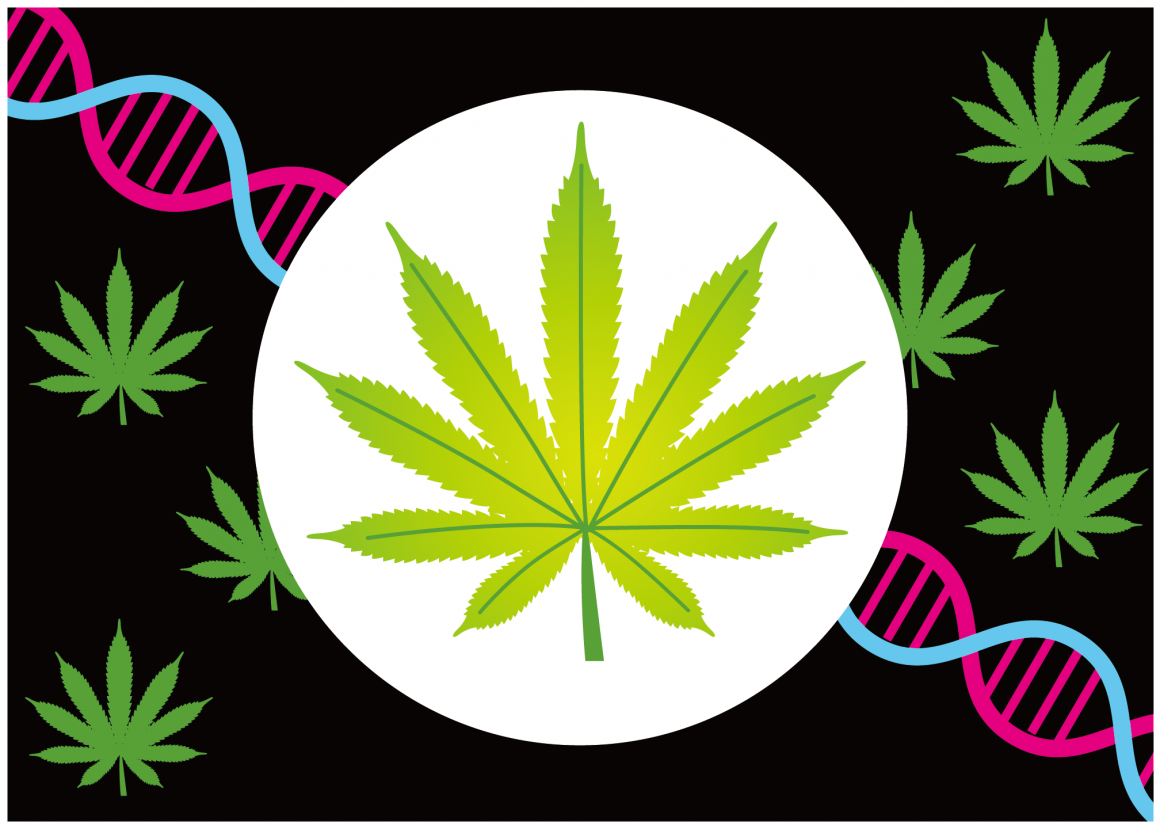
The smoke and mirrors of cannabis addiction
By Leonie O’Sullivan, December 19 2023—
Disclaimer: This article discusses topics related to mental health and substance use.
The spread of misinformation has led a significant portion of the public to perceive cannabis as non-addictive. A survey of cannabis users in Washington State revealed that 68 per cent of survey responders believed cannabis is non-addictive, and a further 15 per cent were unsure of cannabis’ addictiveness. However, this topic is not up for debate and scientists are sure that cannabis is addictive.
When cannabis is consumed, delta-9-tetrahydrocannabinol (THC) interacts with cannabinoid receptors in our brains, delivering the desired euphoric high. These desirable effects can lead to prolonged and excessive use of cannabis, which can lead to cannabis use disorder (CanUD). CanUD is diagnosed using eleven criteria outlined below from the American Psychiatric Association’s Diagnostic and Statistical Manual of Mental Disorders, Fifth Edition.
- Consuming cannabis in higher doses or over a longer duration than was intended.
- A consistent desire or failed attempts to reduce or cease cannabis use.
- Spending a lot of time to obtain, use and recover from cannabis.
- Craving or desiring to use cannabis.
- Interference of recurrent cannabis use with work, school, or home obligations.
- Continued social or interpersonal issues caused or exacerbated by cannabis use.
- Giving up or reducing recreational or social activities due to cannabis use.
- Using cannabis recurrently in physically hazardous situations.
- Continued cannabis use despite a physical or psychological problem.
- Building tolerance i.e., a diminished effect from the same dose over time.
- Withdrawal symptoms include anxiety, decreased appetite, depressed mood, insomnia and irritability.
A mild CanUD is defined by the presence of two to three of the criteria in the past year. Moderate and severe levels of CanUD rely on four to five and at least six of the criteria, respectively.
CanUD is treated using cognitive behavioural therapy (CBT), motivational enhancement therapy (MET) and abstinence-based contingency management (CM). CBT focuses on the relationship between thoughts, feelings and behaviours. MET is an intervention designed to help individuals find internal motivation to create positive behavioural changes. The goal of CM is to encourage abstinence using rewards or incentives. Currently, there are no approved medications available for individuals with CanUD, but several treatments are showing potential in early studies and clinical trials.
The risk of developing a CanUD is underappreciated in society. About ten per cent of individuals who try cannabis will end up developing a CanUD. To put this in perspective, the risk of developing a substance use disorder from trying tobacco is 32 per cent, and the risk associated with alcohol is 15 per cent. Risk factors for CanUD include genetics and environmental influences.
A recent study published in Nature Genetics investigated the genetic risk factors of CanUD and highlighted links between numerous sections of DNA and cannabis addiction. This was the largest CanUD genetic study to date, and it was completed by analyzing more than one million genomes — a genome is a person’s complete set of genetic information. The researchers also looked at associations between CanUD and other health conditions.
Since cannabis is often smoked, it is not surprising that CanUD was found to increase the risk of lung cancer. A bidirectional causal relationship was identified between CanUD and schizophrenia. Other comorbidities strongly correlating with CanUD included major depressive disorder (MDD), post-traumatic stress disorder (PTSD) and generalized anxiety disorder symptoms. Seven out of ten individuals diagnosed with CanUD have another psychiatric disorder diagnosis compared to 1.5 out of ten individuals who do not use cannabis. This study also identified that multiple-site chronic pain may be a driver of CanUD for certain individuals. The authors noted that this link may signify that cannabis could be a viable treatment for pain — clinical trials for the use of cannabis in pain management are currently ongoing.
If you are a consumer of cannabis but are concerned about its adverse effects, you should speak with a healthcare provider. If your main reason for using cannabis is for relaxation or pain, products containing cannabidiol (CBD) may be a safer option compared to THC products. If you are struggling or are worried that you could have a substance use disorder, you should speak with the University of Calgary’s Harm Reduction Support Advisor. Other resources are available through the Student Wellness Centre.
